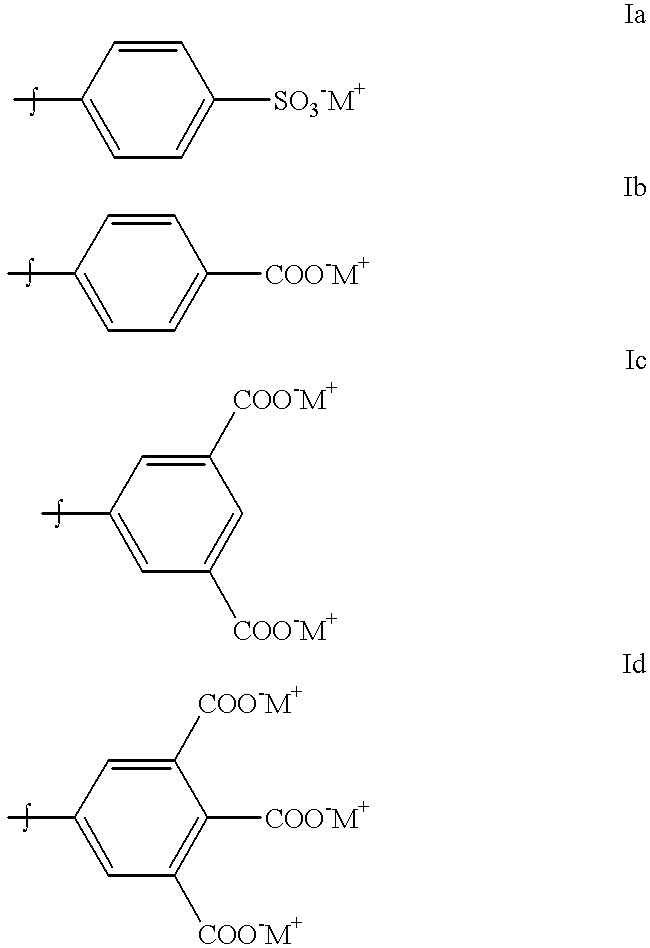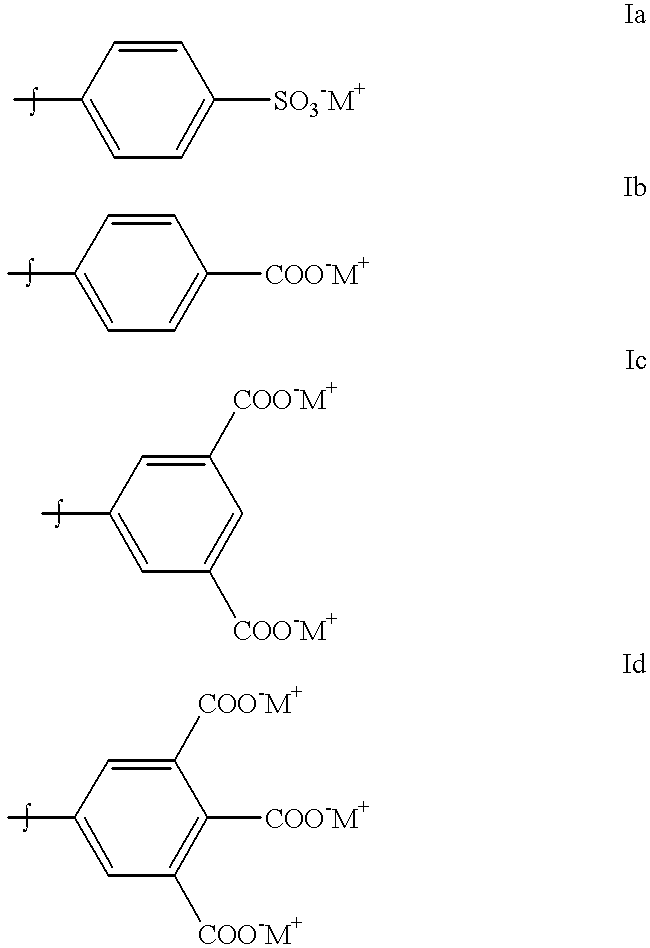Superior waterfastness and bleed control with specifically treated pigments for ink-jet printing
a pigment and inkjet printing technology, applied in the field of inkjet printing inks, can solve the problems of pigment particles agglomerating, pigments taking a relatively long time to dry on the media, inks are inherently thermodynamically unstable, etc., and achieve the effect of improving the print properties of pigmented inks, black to color bleed and water resistan
- Summary
- Abstract
- Description
- Claims
- Application Information
AI Technical Summary
Benefits of technology
Problems solved by technology
Method used
Image
Examples
example i
The following example describes the preparation of a modified carbon black pigment with 0.8 mmol / g benozic acid (BA) and 1.4 mmol / g dodecanoic acid (DA). A 4 liter beaker is equipped with an overhead stirrer and hot plate. To this is charged 1500 mL of ethanol and 1500 mL of water. Then, 32.92 g (0.24 mol) of 4-aminobenzoic acid and 90.44 g (0.42 ml) of 12-aminododecanoic acid are added with stirring while heating to 50.degree. C. At 50.degree. C., 300 g of Monarch700.TM. is added. This is stirred thoroughly to ensure complete incorporation of the black. Finally, 46.95 g (0.66 mol, 97% purity) of sodium nitrite is added as a 230% aqueous solution dropwise over 30 minutes. The reaction is stirred for 5 hour at 50.degree. C. A 1 / 1 solution of ethanol / water is added to maintain a constant volume. After 5 hours, the reaction mixture is allowed to cool to room temperature overnight (while stirring). This is then buchner filtered, and the filter cake is dried over 24 hours, soxhlet extrac...
example ii
The following table shows the improvement in waterfastness of various Group I-treated pigments by addition of Group II -dodecanoic acid (DA) functionality at specified levels. In all cases, waterfastness is markedly improved by the addition of only a slight amount of the Group II functionality. In this case, the amount of colorant transferred from a printed area to an unprinted area with water is measured in % OD (optical density) transferred, because OD of the different pigments varied.
example iii
This example shows the improvement in waterfastness of one Group I treated pigment, 0.8 mmol / g BA, by functionalization with varying levels of DA. On all three papers tested, CHAMPION Datacopy, PAPYRUS Multicopy, and UNION CAMP Jamestown, waterfastness is greatly improved by functionalization with the Group II moiety. Here, optical density, OD, transferred is listed because ODs of all pigments are virtually identical.
PUM
| Property | Measurement | Unit |
|---|---|---|
| mean diameter | aaaaa | aaaaa |
| pH | aaaaa | aaaaa |
| transparency | aaaaa | aaaaa |
Abstract
Description
Claims
Application Information
 Login to View More
Login to View More - R&D
- Intellectual Property
- Life Sciences
- Materials
- Tech Scout
- Unparalleled Data Quality
- Higher Quality Content
- 60% Fewer Hallucinations
Browse by: Latest US Patents, China's latest patents, Technical Efficacy Thesaurus, Application Domain, Technology Topic, Popular Technical Reports.
© 2025 PatSnap. All rights reserved.Legal|Privacy policy|Modern Slavery Act Transparency Statement|Sitemap|About US| Contact US: help@patsnap.com



